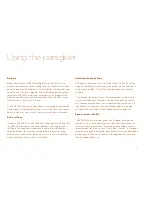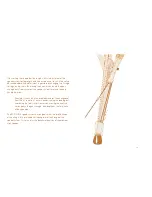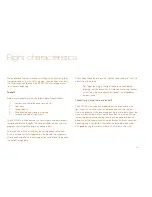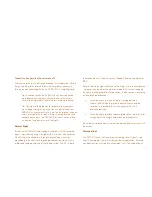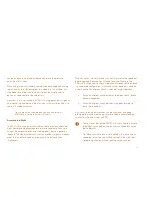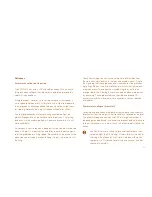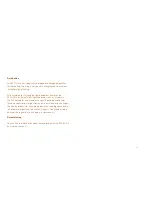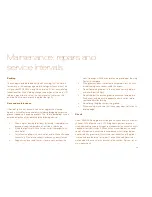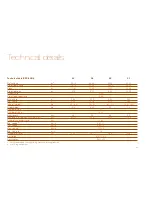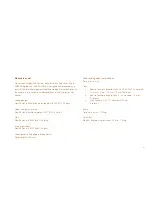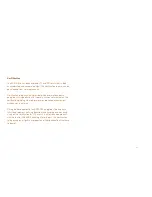
55
The behaviour of the spiralling paraglider can be separated into two
phases: in the beginning the glider begins with a normal turn which
progressively tightens, with increasing angle of bank. In the second
phase the paraglider engages its spiral mode. This means that the
wing dives forward with an increase of acceleration. During this
phase of the manoeuvre try to keep a neutral sitting position and give
way to the centrifugal force – your body will be pushed to the outside.
Recovery from the manoeuvre is achieved by progressively releasing
the inside brake. While coming out of a spiral dive with high vertical
and rotational speeds it is essential to release the brake carefully,
and/or reapply a little inside brake if necessary, so that you can
prevent the wing pitching back excessively, and then diving in front.
Make sure that you start the recovery with plenty of height remaining
above the ground. Generally speaking you should allow the same
amount of time to recover as it took to enter the manoeuvre, but
remember that the sink rate will be higher!
The EPSILON comes out of a steep spiral dive by itself if a neutral
sitting position is maintained. Active weight shift to the inside of the
turn can lead to stronger acceleration and the glider may show less
desire to recover by itself.
Caution: The EPSILON 6 is certified for harnesses in group
GH (without rigid cross-bracing). Group GX harnesses
(with cross-bracing) or those with very low hang points could
drastically alter the flying behaviour in the spiral dive. See
section «Suitable harnesses».
Caution: Do not fly spiral dives or aggressive changes of
direction with big ears applied: the raised wing loading
carried by fewer lines can damage the glider.
B-Stall
B-Stalls put extremely high stresses on the material and the profile
shape of the glider. We recommend that you do not do B-Stall
although this manoeuvre does not present special difficulties for the
EPSILON 6.
Stalling
One-sided stall (spin)
In a tight turn the EPSILON 6 gives you early and clear warning of
the risk of airflow breakaway by a strongly increasing brake load. If,
however, the wing does stall, the EPSILON 6 will react dynamically.
Summary of Contents for Epsilon 6
Page 1: ...1 Betriebshandbuch User manual Manuel d utilisation EPSILON6...
Page 2: ...Edition 12 2008...
Page 3: ...3 Deutsch Seite 5 35 English Page 37 67 Fran ais Page 69 99...
Page 4: ...4...
Page 33: ...33...
Page 36: ...36...
Page 59: ...59...
Page 65: ...65...
Page 68: ...68...
Page 97: ...97...
Page 101: ...101 Leinenplan Line diagram Plan de suspentage EPSILON 6 23 26 28 31...
Page 103: ...103 Palstek Knoten Bowline knot N ud de chaise...
Page 104: ...104...
Page 109: ...ADVANCE Thun AG Seestrasse 14 CH 3602 Thun...
Page 111: ......




